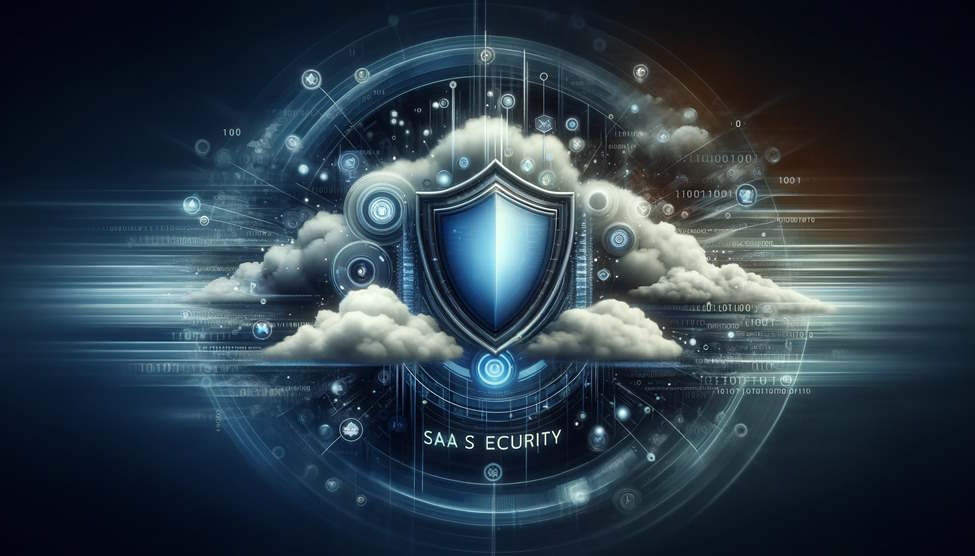What Is SaaS Security?
SaaS security refers to the measures and strategies implemented to protect user data and information when using cloud-based software services. It covers a wide range of areas, including data protection, access control, network security, and privacy.
SaaS security is an integral part of the overall IT security framework, especially for businesses that rely heavily on SaaS applications for their operations. It involves implementing security measures at different levels of the SaaS stack to ensure the integrity, confidentiality, and availability of data.
Importance of Security in SaaS Environments
Data Protection
Businesses store vast amounts of sensitive information in the cloud, including customer details, financial records, and proprietary data. Without adequate security measures in place, this data could be vulnerable to breaches and unauthorized access.
Data breaches can lead to severe consequences, including financial losses, damage to a company's reputation, and potential legal issues. Therefore, businesses need to prioritize security when using SaaS applications to ensure the safety of their data.
Cost of Incidents
The cost of security incidents is another factor that emphasizes the importance of SaaS security. According to IBM's Cost of a Data Breach Report, the average total cost of a data breach is $3.86 million. This cost includes direct expenses such as detection and escalation, notification and post-breach response, and lost business.
Moreover, the report reveals that breaches caused by malicious attacks, which are the most common and most costly type of breach, take an average of 280 days to identify and contain. This extended period adds to the cost and emphasizes the importance of having robust SaaS security measures in place.
Regulatory Compliance
Regulatory compliance is another critical aspect of SaaS security. Various industries have specific regulations regarding data protection and privacy. For instance, the healthcare industry has HIPAA (Health Insurance Portability and Accountability Act), and the finance industry has PCI DSS (Payment Card Industry Data Security Standard).
Non-compliance with these regulations can lead to hefty fines, legal ramifications, and loss of customer trust. Therefore, businesses must ensure that their SaaS providers comply with all necessary regulations to avoid such consequences.
9-Step SaaS Security Checklist
1. Data Encryption
Encryption is the process of converting data into a code to prevent unauthorized access. It's crucial for protecting sensitive information, especially during data transfers.
You should ensure that your SaaS provider uses robust encryption algorithms for both data at rest and data in transit. Also, consider using additional encryption tools for an extra layer of security.
2. Data Masking and Redaction
Data masking and redaction are techniques used to protect sensitive information from unauthorized access. Data masking involves replacing real data with fictitious yet realistic data, thereby making it useless to hackers. Redaction involves completely removing sensitive data from documents.
These techniques are essential for protecting customer data, especially when shared with third parties. You should ensure that your SaaS provider has robust data masking and redaction capabilities.
3. SSPM and Other Cloud Security Solutions
Secure SaaS Policy Management (SSPM) is a critical element in safeguarding SaaS platforms. SSPM tools provide comprehensive visibility and control over SaaS applications, enabling organizations to manage security policies consistently across their entire SaaS ecosystem. These tools can detect misconfigurations, enforce compliance standards, and identify risky user behaviors.
In addition to SSPM, other cloud security solutions include Cloud Access Security Brokers (CASBs) and Cloud Security Posture Management (CSPM). CASBs act as intermediaries between users and cloud services, providing additional security measures such as monitoring, compliance enforcement, and data leakage prevention. CSPM tools, meanwhile, automate the identification and remediation of risks across cloud infrastructures, enhancing the overall security posture.
4. Strong Authentication Mechanisms
Authentication verifies the identity of users before granting them access to the system. It's crucial for preventing unauthorized access and maintaining the integrity of your data.
You should ensure that your SaaS provider offers robust authentication mechanisms, such as two-factor authentication and biometric authentication. Also, consider implementing a strong password policy and educating your employees about the importance of maintaining secure login credentials.
5. Dependency and Third-Party Component Management
SaaS applications often rely on various external components, such as plugins, add-ons, and APIs. While these components can enhance the functionality and performance of your SaaS application, they can also introduce security vulnerabilities if not properly managed.
It's crucial to keep track of all third-party components in your SaaS application and ensure they're up-to-date and secure. Regularly reviewing and updating these components can help prevent security issues. Moreover, it's also essential to evaluate the security practices of third-party vendors before integrating their components into your SaaS application.
6. Real-Time Security Monitoring and Alerting
Real-time security monitoring and alerting is another critical part of the SaaS security checklist. This involves continuously monitoring your SaaS platform for any unusual or suspicious activities and setting up alerts to be notified immediately when such activities are detected.
Security monitoring tools can help identify potential threats before they become full-blown security incidents. They can detect anomalies and patterns that could indicate a cyberattack, such as repeated login attempts, unusual data transfers, or changes to system files.
Alerting ensures that you're immediately notified of these potential threats. This allows you to take swift action to mitigate the threat and prevent any potential damage.
7. Disaster Recovery and Business Continuity Plans
Even with the best security measures in place, the risk of a cyberattack or a data breach can never be completely eliminated. That's why having a disaster recovery and business continuity plan is an essential part of any SaaS security checklist.
A disaster recovery plan outlines the steps to be taken to restore your SaaS platform and recover data in the event of a security incident. This includes backing up data regularly, typically in the cloud, and ensuring backups are stored securely.
A business continuity plan is a broader plan that covers how your business will continue to operate during and after a disaster or disruption. This could include alternative ways of working, communication strategies, and more.
8. User Education and Awareness
SaaS users should be trained on best security practices, such as using strong passwords, recognizing phishing attempts, and reporting suspicious activities. They should also be educated about the potential consequences of security breaches, both for the business and for them personally.
Moreover, security awareness training should be an ongoing process, not a one-time event. Regular training sessions, reminders, and updates can help keep security top of mind for users and encourage them to maintain good security habits.
9. Endpoint Protection Solutions
Endpoints, such as user devices and servers, are often targeted by cyber attackers as they can be easier to exploit than the SaaS platform itself.
Endpoint protection solutions help secure these endpoints and protect them against threats. They monitor and control the activities on these endpoints and can prevent unauthorized access, detect and remove malware, and more. It is important to ensure that all endpoints connecting to SaaS applications have endpoint protection, or at least antivirus.
Conclusion
In conclusion, securing your SaaS platform requires a multi-faceted approach that includes firewalls and IPS, dependency management, real-time monitoring and alerting, disaster recovery and business continuity planning, user education, and endpoint protection. By following this SaaS security checklist, you can ensure you're taking a comprehensive approach to securing your SaaS platform and protecting it against the ever-evolving landscape of cyber threats.







